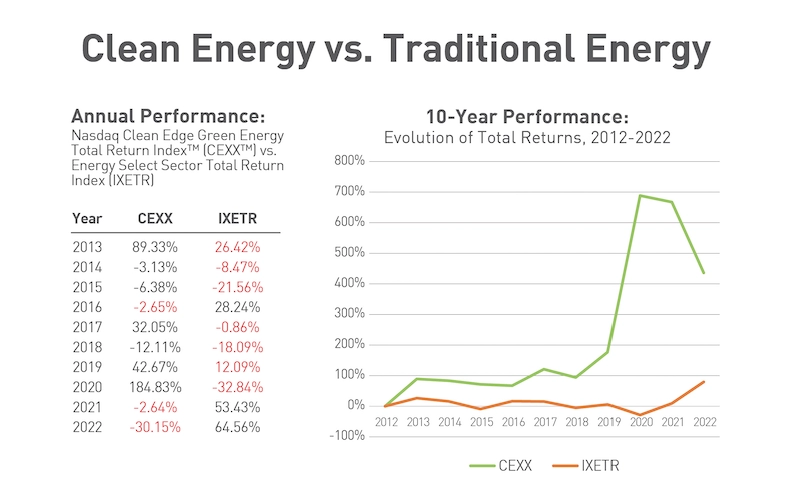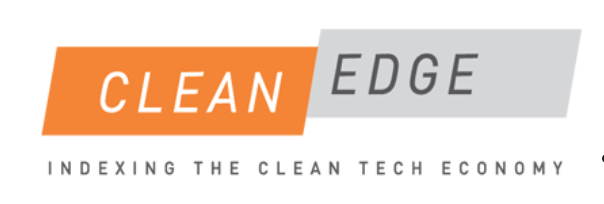Clean Energy Investment and Innovation Trends
Navigating the Road Ahead with a 7-Point Energy Transition Action Plan
by Ron Pernick of Clean Edge
As someone who has been researching clean-tech sectors for more than two decades and conducting stock index research since 2006, I find it exciting to be tracking the mass adoption and scale-up progress of a range of clean technologies, from solar power and energy storage to electric vehicles and transmission infrastructure.
Numerous factors are driving the shift from fossil fuels to clean energy, but two stand out: low-cost renewables (utility-scale solar and onshore wind are now the most price-competitive forms of new electricity capacity additions in most regions) and supportive energy and climate policies (with China’s Five-Year Plans, the U.S.’s Inflation Reduction Act, and Europe’s REPowerEU initiative leading the way). Clean energy has been scaling significantly for the past decade, but recent developments are driving a new wave of investments and deployment.
Some Key Facts and Figures:
- Energy transition investments globally hit $1.1 trillion in 2022, breaking the $1 trillion mark for the first time, according to BloombergNEF. And a projected $1.7 trillion will be investing globally in clean energy in 2023, significantly more than the approximately $1 trillion expected to flow into fossil fuels, according to International Energy Agency.
- Onshore wind and solar are not only the cheapest forms of new power capacity additions globally, but the fastest to deploy. New nuclear, on the other hand, is currently both the most expensive and slowest to deploy.
- Power markets are reaching a tipping point, with most new additions globally coming from solar and wind. A record 83 percent of all new electricity capacity additions came from renewables last year, according to the International Renewable Energy Agency (IRENA).
- All these new installations are having a significant impact. By 2025, more than a third of all global electricity production will come from renewables, according to the International Energy Agency (IEA), surpassing all generation from coal. Globally, solar and wind already outpace generation from nuclear power.
- Eleven states now garner at least 30 percent of their in-state generation from solar and wind. Iowa and South Dakota, the two leaders, generated more than half their electricity from renewables, mainly wind power, in 2022. Iowa surpassed 60 percent for the first time, a new record in the U.S. In California, solar (utility-scale and distributed) contributed 27.3 percent of the state’s total in-state generation; solar now competes with wind as a major generation source in an increasing number of regions.
- Electric vehicle sales worldwide are projected to increase 35 percent this year, up from approximately 10 million sold in 2022 to 14 million in 2023, according to the IEA. If these projections hold, EV sales will equal approximately 18 percent of total car sales this year, up from just 4 percent three years ago.
There are many other examples of the shift to clean tech – all shining a light on the massive transition that is underway.
Read Ron's full article including his 7-Point Energy Transition Action Plan, all here - https://greenmoney.com/clean-energy-investment-and-innovation-trends-navigating-the-road-ahead/
=====




